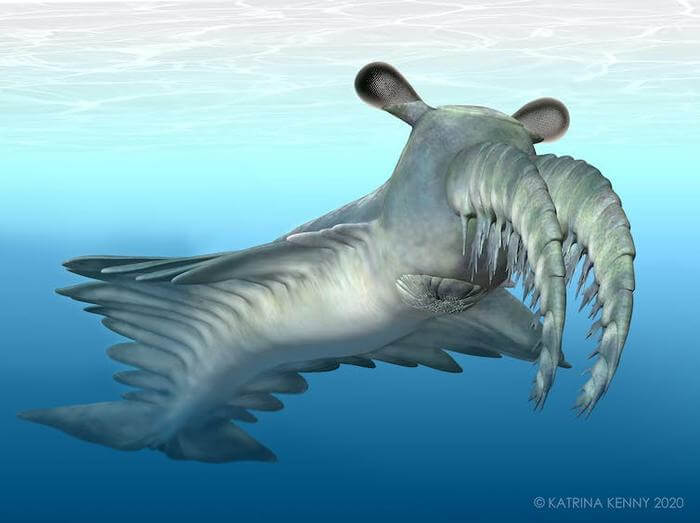In a fresh look into ancient oceans, scientists have unveiled surprising facts about an extinct marine creature, the Anomalocaris canadensis. Often considered an apex predator of the Cambrian period, recent biomechanical studies indicate that the 2-foot-long creature might not have been as menacing as previously thought.
Anomalocaris canadensis, whose name translates to “weird shrimp from Canada,” was first discovered in the late 1800s. Due to the scarred and crushed trilobite exoskeletons found in the fossil record, it was believed that this predator terrorized trilobites with its strong front legs.
However, lead author Russell Bicknell, who conducted the research at the University of New England in Australia, had doubts about this theory. He stated, “That didn’t sit right with me, because trilobites have a very strong exoskeleton, which they essentially make out of rock, while this animal would have mostly been soft and squishy.”
To get to the bottom of this, Bicknell and an international team of researchers utilized innovative techniques to study the predator’s anatomy and movements. The team created a 3D reconstruction of A. canadensis from fossils found in Canada’s Burgess Shale. By observing modern whip scorpions and whip spiders, they found that the predator’s front appendages were flexible and could grab prey.
Using finite element analysis, a modeling technique, the team identified the stress and strain points of A. canadensis’s appendages during prey capture. The results indicated that its appendages would likely have been damaged if it had attempted to catch hard prey, such as trilobites.
Combining biomechanical modeling techniques, the researchers have painted a different picture of A. canadensis than previously assumed. Instead of a fearsome predator pursuing hard-shelled creatures on the ocean floor, it was likely a fast and agile swimmer chasing after soft prey in open water.
Bicknell commented, “Previous conceptions were that these animals would have seen the Burgess Shale fauna as a smorgasbord, going after anything they wanted to, but we’re finding that the dynamics of the Cambrian food webs were likely much more complex than we once thought.”
This study, published in Proceedings of the Royal Society B, provides a fresh perspective on an ancient creature, revealing the intricate nature of the Cambrian period’s food web.


